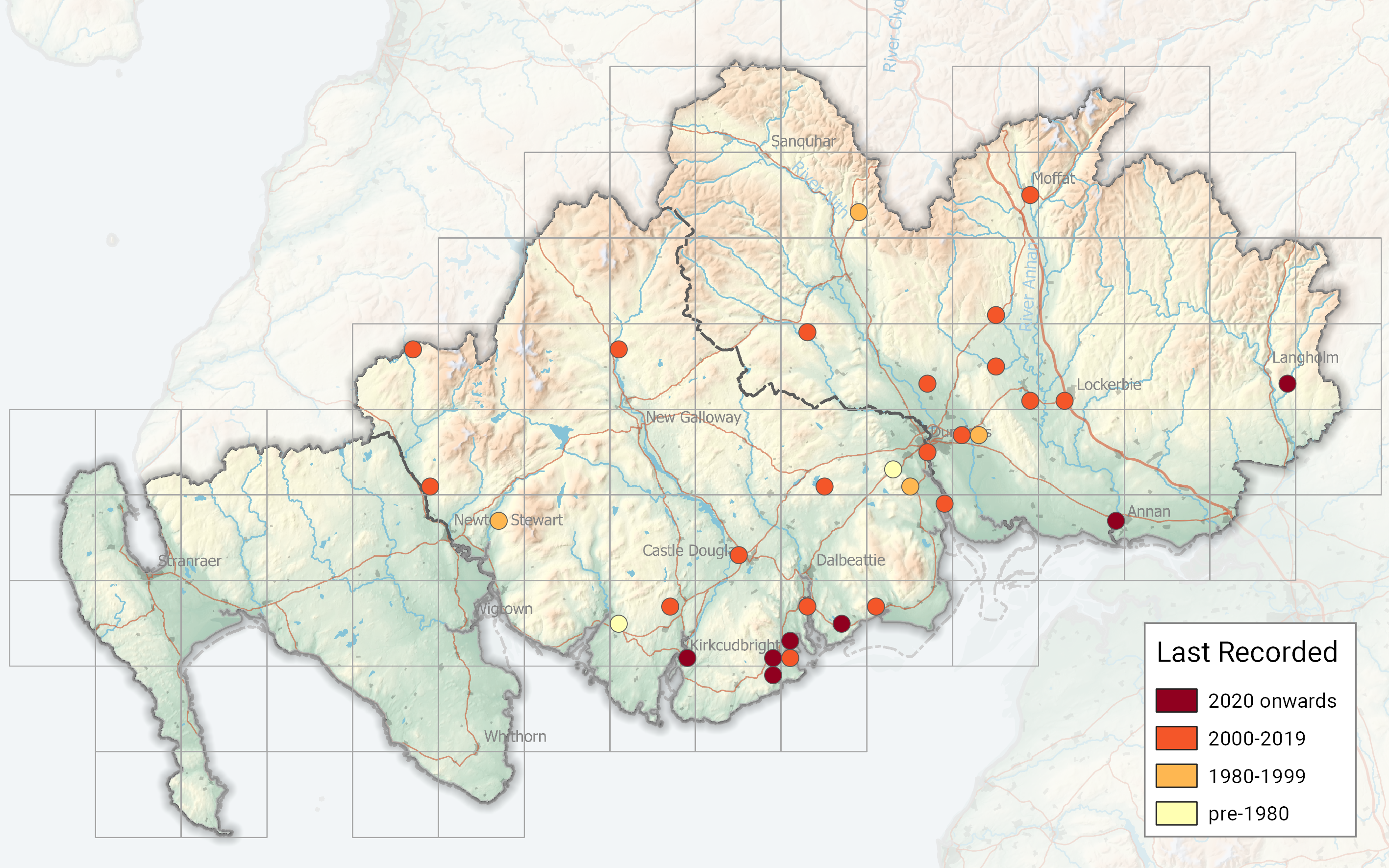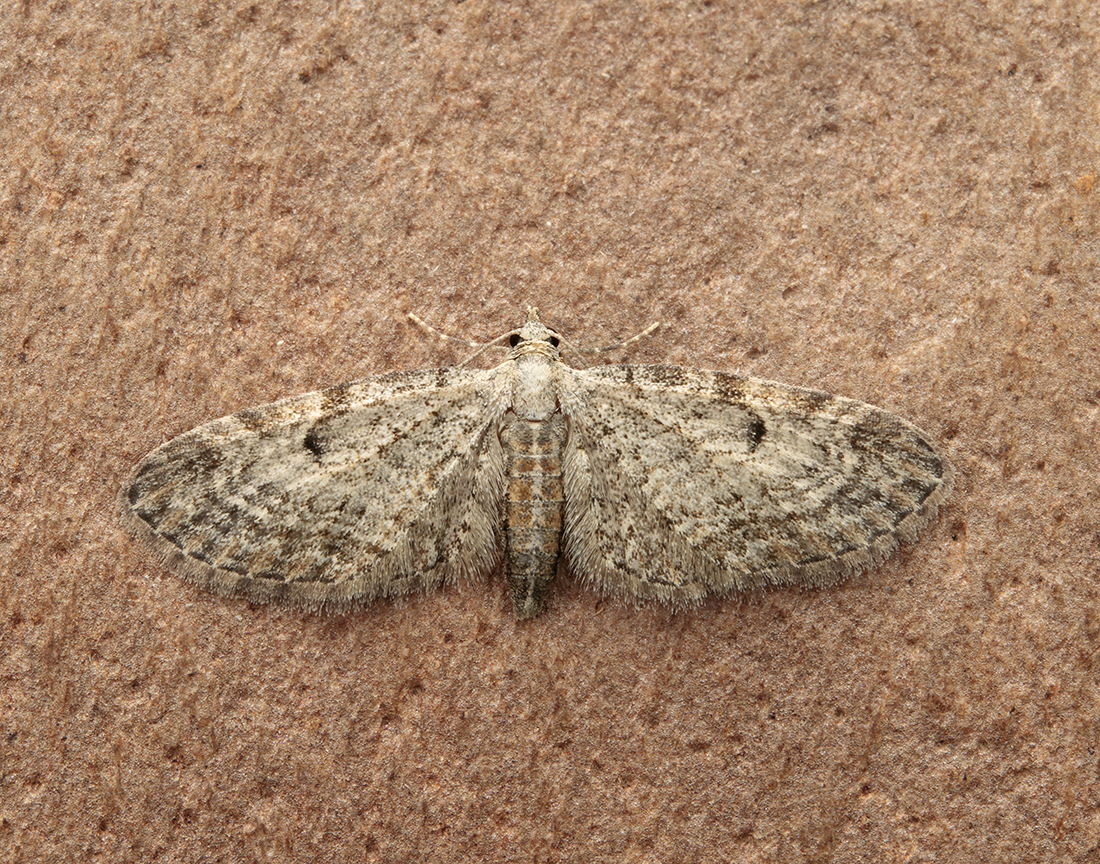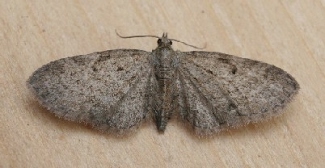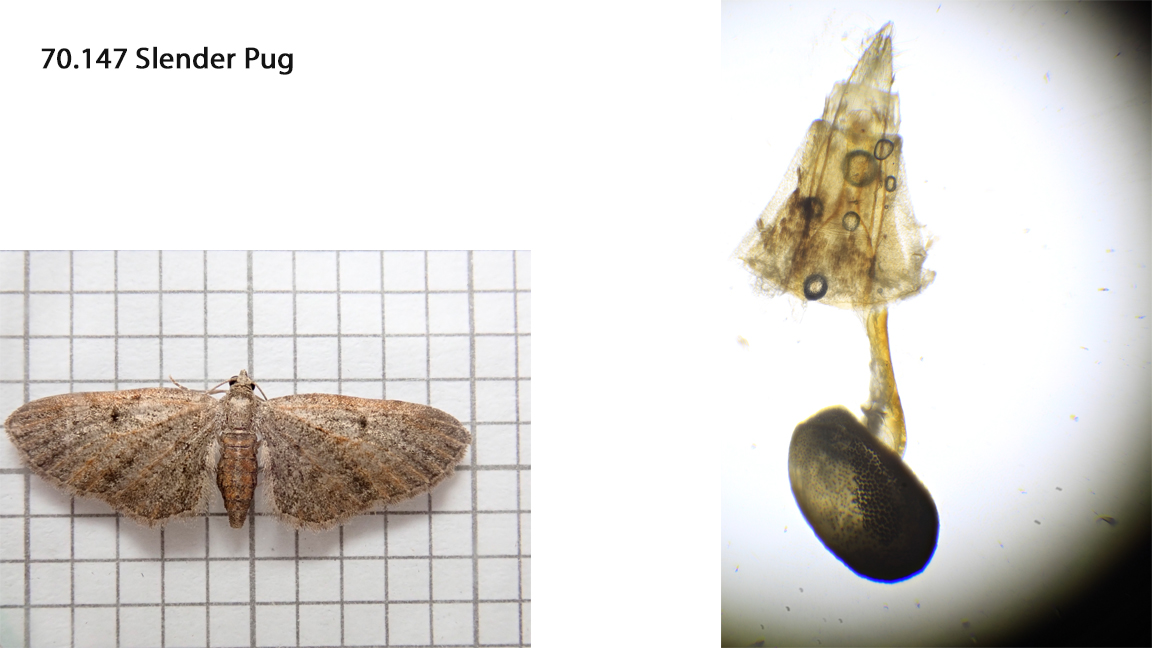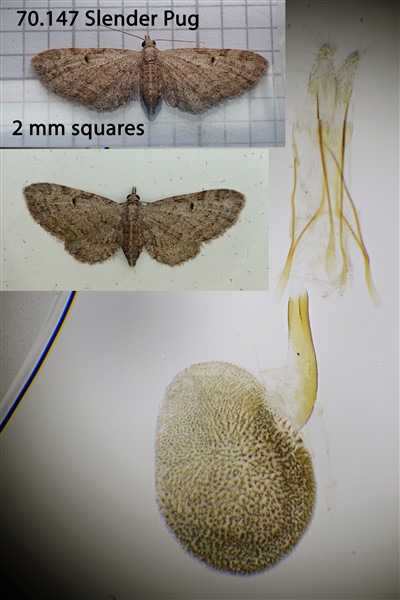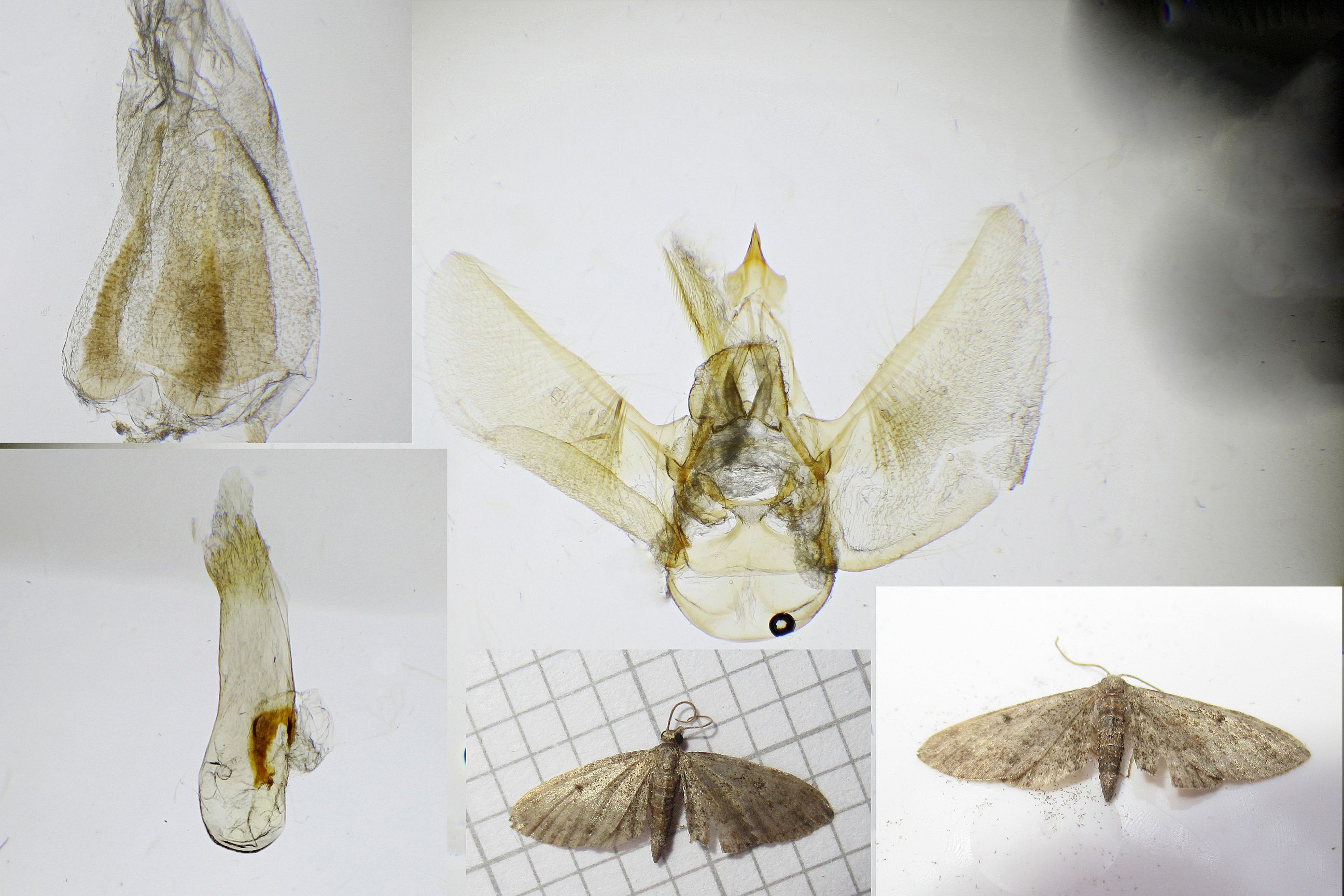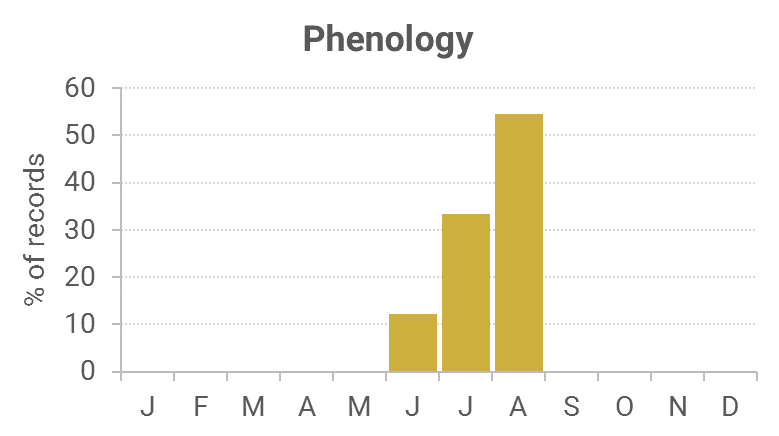Identification
Care required to separate from other ‘pugs.’ The greyish-brown smallish forewing that is fairly rounded with a black central spot makes it a distinctive pug.
Recording method
Larvae can be found in the catkins of sallows and other willows in spring, the adults can be found by day on trunks of large sallows, and come to light in small numbers.
Life cycle
One generation. Overwinters as an egg on the foodplant. Larvae are present within catkins during March and April, with pupation taking place there or on the ground.
Larval foodplants
Larvae feed on Goat Willow, Eared Willow and Grey Willow catkins.
Habitat
Fens, marshes, damp woodland, ponds and gardens are just a few of the habitats used.
History
First recorded for Dumfries and Galloway in 1862 for VC73 at Dalskairth by Lennon who stated that it was ‘very rare’, in 1906 for VC74 at Corsemalzie by Gordon who had found ‘the larvae common in sallow catkins in a wood’, but not until 1996 for VC72 at Kirkton by Richard Mearns.

